Are you curious about Which Country Depends On Tourism as a primary economic driver? Discover fascinating insights into nations where tourism significantly shapes their economies. SIXT.VN offers you seamless travel solutions in Vietnam, but let’s first explore which countries heavily rely on tourism revenue. Plan your perfect Vietnam adventure with ease using SIXT.VN for airport transfers, hotel bookings, sightseeing tours, and more. Vietnam offers a rich cultural experience and breathtaking landscapes, making it an ideal destination for travelers seeking unforgettable experiences.
1. Understanding Tourism Dependency: What Does It Mean?
Tourism dependency refers to the degree to which a country’s economy relies on revenue generated by foreign visitors. The higher the percentage of a country’s Gross Domestic Product (GDP) derived from tourism, the more dependent it is on the tourism sector. This dependency can greatly impact a nation’s economic stability, infrastructure development, and overall quality of life.
1.1. How is Tourism Dependency Measured?
Tourism dependency is typically measured by calculating the ratio between the revenue received from foreign visitors and the country’s GDP. The World Tourism Organization (UNWTO) collects and publishes tourist expenditure data, providing valuable insights into global tourism trends and economic impacts.
According to research from UNWTO in 2022, tourism expenditure data provides valuable insights into global tourism trends and economic impacts, helps to measure tourism dependency.
1.2. Why Do Some Countries Rely Heavily on Tourism?
Several factors contribute to a country’s high reliance on tourism:
- Small Economies: Small island nations often have limited resources and economic diversification options, making tourism a crucial source of income.
- Climate and Natural Attractions: Countries with favorable climates, beautiful beaches, unique landscapes, and rich biodiversity attract a large number of tourists.
- Developed Tourism Infrastructure: Countries that have invested in well-developed seaside facilities, transportation, and accommodation options are better positioned to capitalize on tourism revenue.
2. Top 10 Countries Most Reliant on Tourism
Based on the ratio between revenue from foreign visitors and GDP in 2022, here are the top 10 countries most dependent on tourism:
2.1. Maldives
In 2022, revenue from foreign visitors equaled 68% of the GDP of the Maldives.
- Population: 515,000
- GDP: $6.2 billion
- Area: 300 km²
The Maldives, an archipelago of 1,190 small islands in the Indian Ocean, tops the list. With a per capita income of $36,400 (PPP), it is considered a rich country. The Maldives gained independence from the UK in 1965. Temperatures remain between 25 and 35 degrees Celsius year-round, making it an ideal destination for beach holidays. While holidaying in the Maldives can be expensive, with some hotels costing over $5,000 per night, the country’s economy heavily relies on tourism.
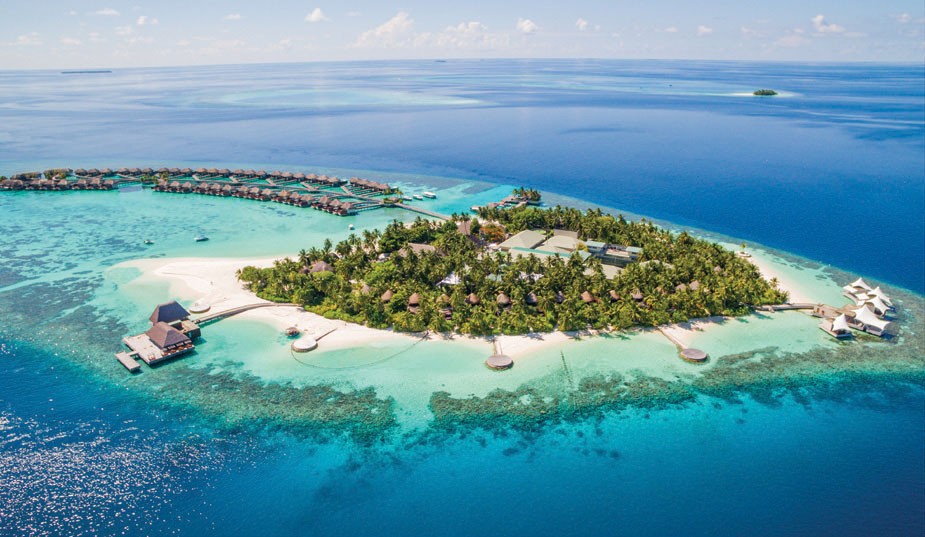 Maldives Beach Resort
Maldives Beach Resort
Alt: Luxurious overwater bungalows at a Maldives resort, showcasing the country’s dependence on tourism.
2.2. Antigua and Barbuda
In 2022, revenue from foreign visitors equaled 55% of Antigua and Barbuda’s GDP.
- Population: 101,000
- GDP: $1.7 billion
- Area: 440 km²
Antigua and Barbuda, a Caribbean island nation, ranks second. With a per capita income of $31,000 (PPP), it is considered a country with above-average income. Before achieving complete independence in 1981, it was a British colony. The official state language is English. Half of the country’s economy depends on tourism, which is linked to its beautiful beaches. The tourist season lasts six to seven months, and much of the country is covered by a national park.
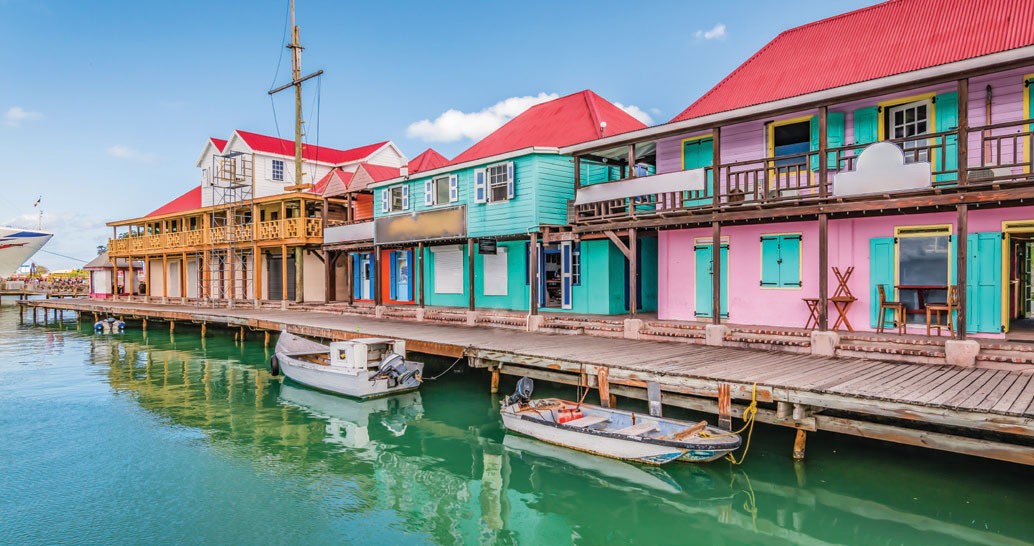 Antigua Beach
Antigua Beach
Alt: Scenic view of a white-sand beach in Antigua, highlighting the island’s economic reliance on tourism.
2.3. Seychelles
In 2022, revenue from foreign visitors equaled 23.1% of the GDP of the Seychelles.
- Population: 100,000
- GDP: $1.9 billion
- Area: 457 km²
The Seychelles, located in the Indian Ocean north of Madagascar, consists of over 100 small islands, 33 of which are inhabited. The average annual income per capita is $40,000 (PPP), making it a wealthy country. It obtained independence from the UK in 1976. The official languages are French and English. In the Seychelles, it is summer all year round, with temperatures between 24 and 30 degrees Celsius. The country’s beaches offer everything needed for an ideal seaside holiday.
2.4. Jamaica
In 2022, revenue from foreign visitors equaled 23.1% of Jamaica’s GDP.
- Population: 2.8 million
- GDP: $16 billion
- Area: 10,991 km²
Jamaica, an island nation in the Caribbean near Cuba, relies heavily on tourism. With an average annual per capita income of $12,000 (PPP), it is a lower-income country. It gained independence from the UK in 1962. Jamaica attracts tourists with its clear sea, hot sun, and white sand. The beach season in Jamaica lasts 10 months. Besides the beaches, the best sights in Jamaica are canyons, waterfalls, and forests.
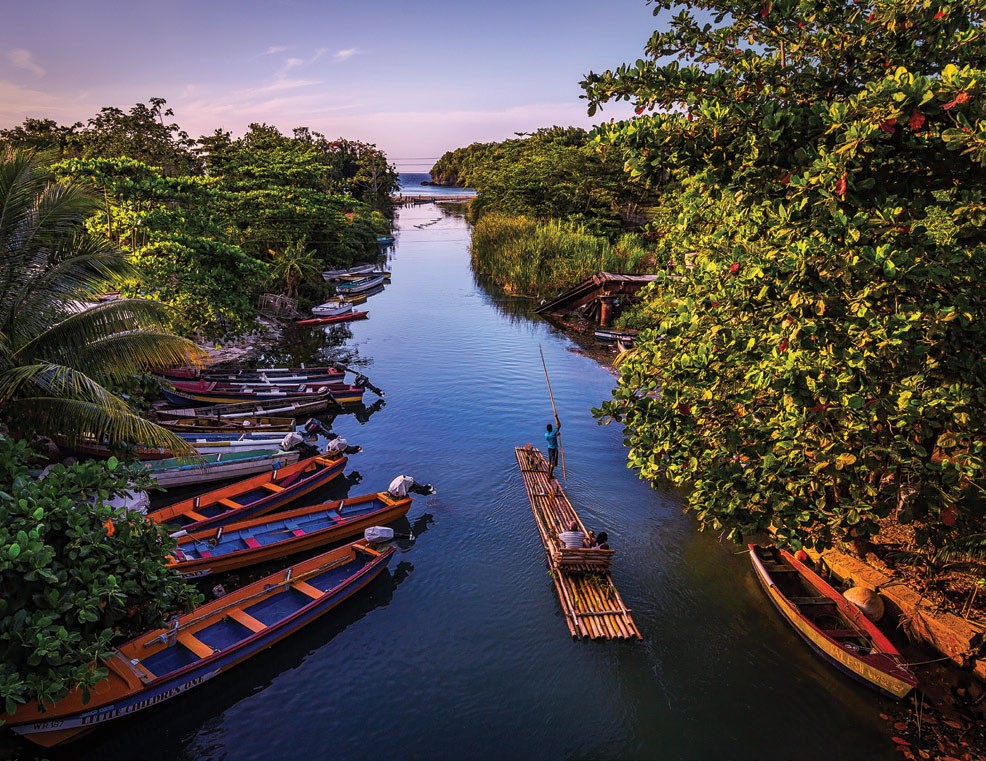 Jamaica Beach
Jamaica Beach
Alt: Tropical beach scene in Jamaica with clear blue waters, emphasizing the importance of tourism to the island’s economy.
2.5. Belize
In 2022, revenue from foreign visitors equaled 20.3% of Belize’s GDP.
- Population: 441,000
- GDP: $3 billion
- Area: 22,966 km²
Belize, located on the Caribbean coast south of Mexico, depends significantly on tourism. It is a country with an average annual per capita income of $9,600 (PPP). It obtained independence from the UK in 1981. Belize does not receive many tourists, meaning that the high share of tourism in the country’s economy is due to the small size of the economy and the underdevelopment of other sectors. The coast, ancient Mayan temples, and the famous Blue Hole attract tourists. The average temperature in Belize varies between 24 and 28 degrees Celsius throughout the year.
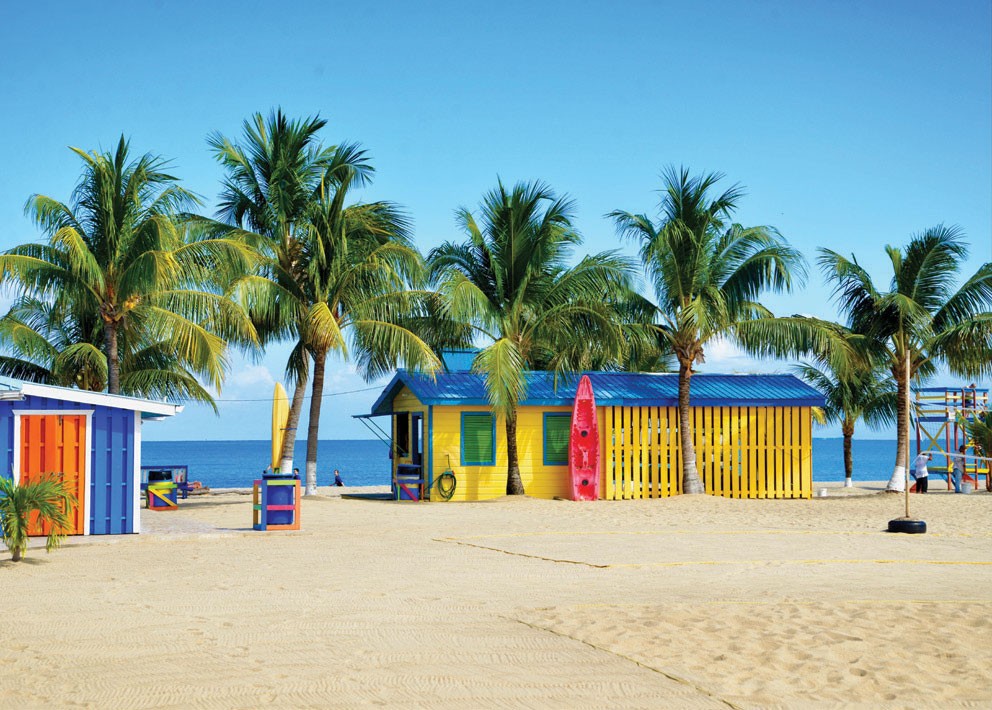 Belize Blue Hole
Belize Blue Hole
Alt: Aerial view of the Great Blue Hole in Belize, a major tourist attraction contributing to the country’s GDP.
2.6. Croatia
In 2022, revenue from foreign visitors equaled 18.9% of Croatia’s GDP.
- Population: 3.9 million
- GDP: $71 billion
- Area: 56,594 km²
Croatia is located on the shores of the Mediterranean Sea and has a 1,800 km coastline along the Adriatic. It is the most recent country to join the European Union in 2013. Per capita income is $42,500 (PPP), making it quite a rich country. Tourists to Croatia are attracted by the coast, which is an extension of the mountain slopes. Croatia is also distinguished by historical monuments and architecture. The Old Town of Dubrovnik is the most popular tourist destination, a UNESCO World Heritage Site.
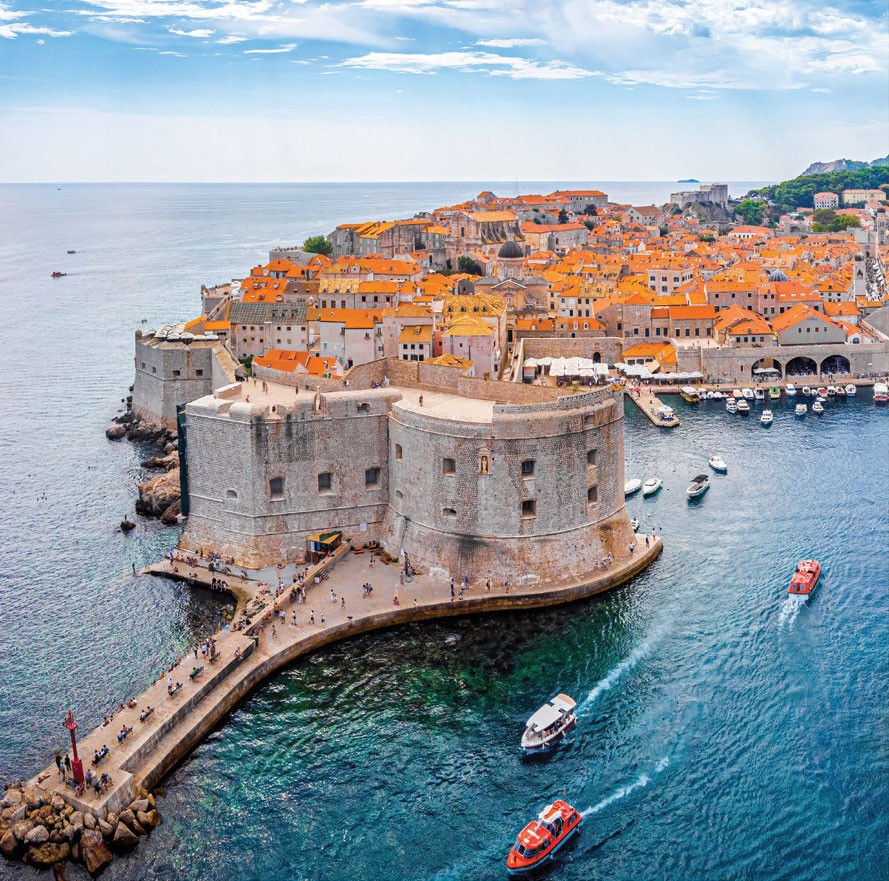 Dubrovnik Old Town
Dubrovnik Old Town
Alt: Historic Dubrovnik Old Town in Croatia, illustrating how tourism drives the economy of the region.
2.7. Montenegro
In 2022, revenue from foreign visitors equaled 18.2% of Montenegro’s GDP.
- Population: 602,000
- GDP: $6.1 billion
- Area: 13,812 km²
Montenegro is in the north of the Balkan Peninsula, on the coast of the Adriatic Sea. Per capita income is $29,000 (PPP), making it a country with above-average income. Tourists in Montenegro are attracted by the coast, which is an extension of the country’s mountain slopes. Montenegro has a 296-kilometer coastline along the Adriatic Sea, dotted with well-preserved old towns.
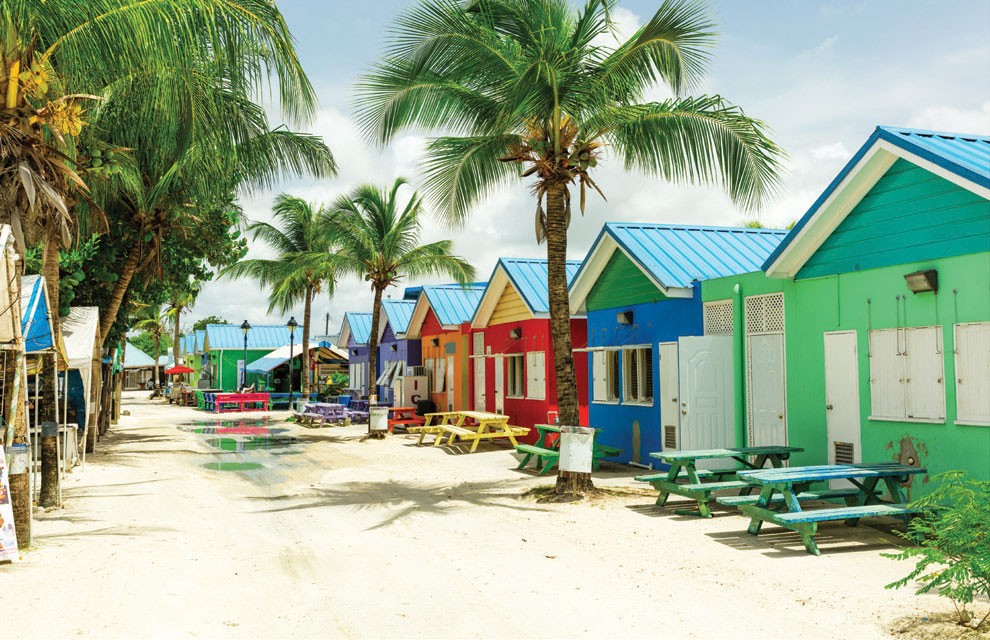 Sveti Stefan, Montenegro
Sveti Stefan, Montenegro
Alt: Picturesque Sveti Stefan islet in Montenegro, showcasing a popular tourist destination reliant on visitor revenue.
2.8. Barbados
In 2022, revenue from foreign visitors equaled 16.2% of Barbados’s GDP.
- Population: 268,000
- GDP: $5.7 billion
- Area: 439 km²
Barbados is a Caribbean Island located north of Venezuela. The average annual income per capita is $18,000 (PPP), making it a low-income country. Barbados achieved independence from the UK in 1958. The official state language is English. The country does not attract many visitors between June and December when it frequently rains. However, the January-May dry season is ideal for seaside tourism.
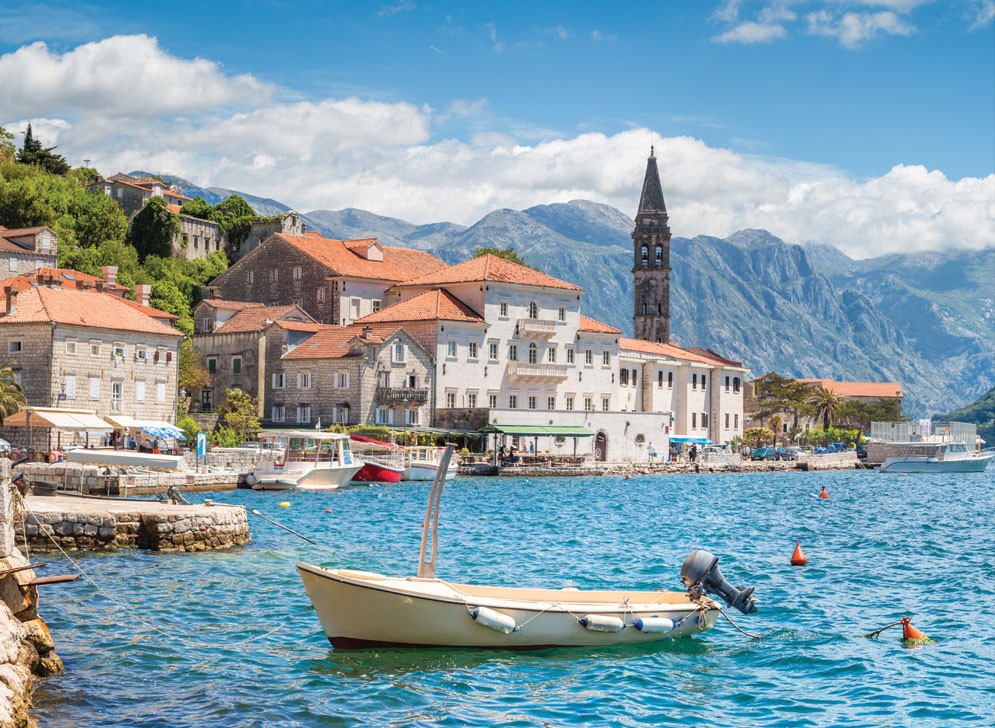 Barbados Beach
Barbados Beach
Alt: Pristine beach in Barbados with clear turquoise waters, underscoring the island’s economic dependence on tourism.
2.9. Albania
In 2022, revenue from foreign visitors equaled 16.2% of Albania’s GDP.
- Population: 2.8 million
- GDP: $18.5 billion
- Area: 28,748 km²
Albania is located west of the Balkan Peninsula, on the coast of the Adriatic Sea. Per capita income is $17,800 (PPP). Tourists in Albania are attracted by the beaches with white sand and clean water. The historical and archaeological monuments of Albania are also of interest. Three cities in Albania are UNESCO World Heritage Sites: Butrint, Gjirokastër and Berat.
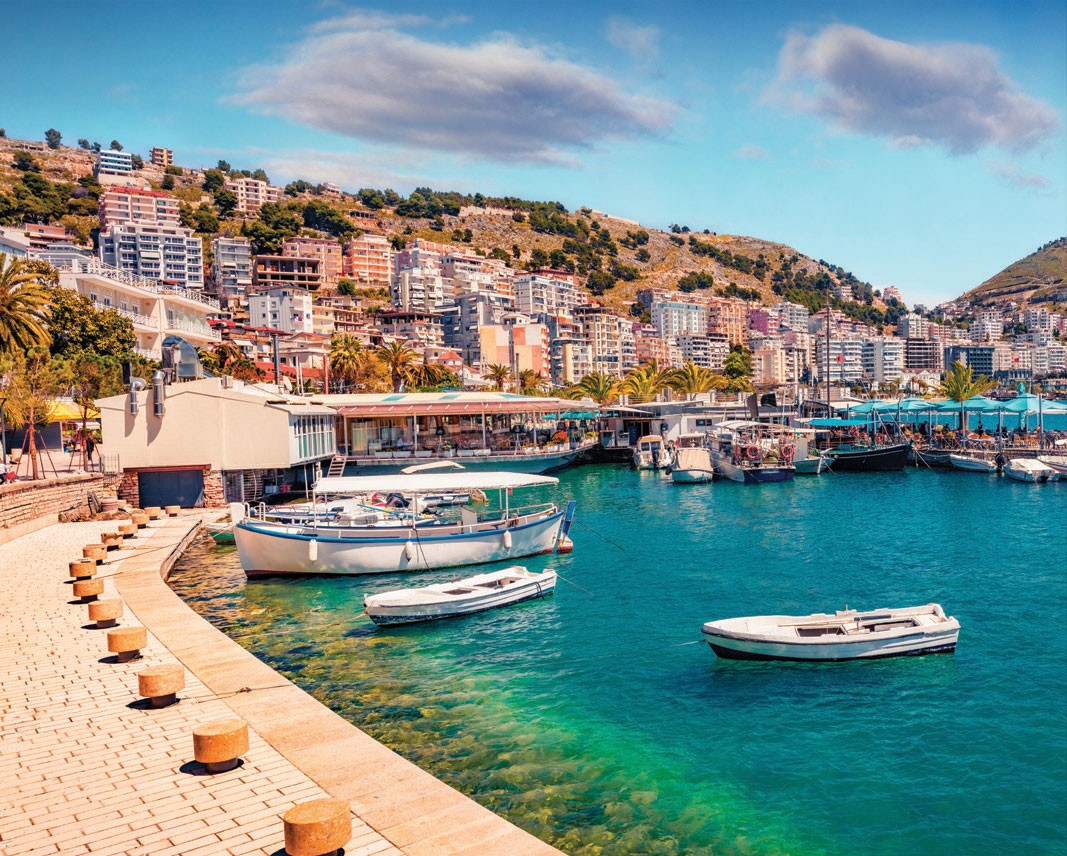 Albania Beach
Albania Beach
Alt: Scenic Albanian coastline with sandy beaches, reflecting the country’s growing reliance on tourism revenue.
2.10. Fiji
In 2022, revenue from foreign visitors equaled 14.33% of Fiji’s GDP.
- Population: 926,000
- GDP: $4.8 billion
- Area: 18,274 km²
Fiji is a small island country in the southwest Pacific Ocean. It is located on the archipelago of the same name, which consists of 330 islands. Fiji is a country with an average annual per capita income of $14,000 (PPP). Tourists in Fiji are attracted by the fantastic beaches with white sand, palm trees, and clear water. The country’s tropical forests and villages are also attractive to visitors.
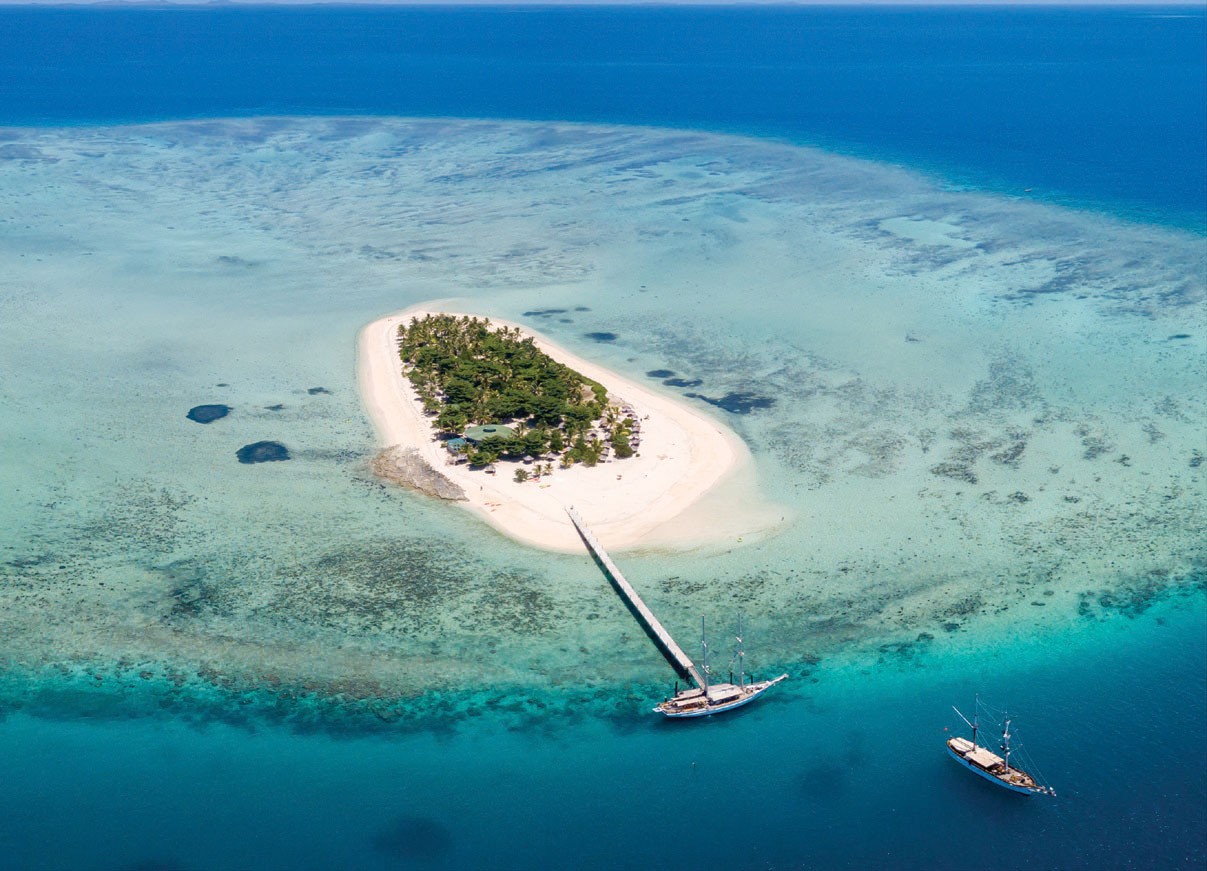 Fiji Beach
Fiji Beach
Alt: Tranquil beach scene in Fiji with turquoise waters, highlighting the country’s dependence on tourism.
3. The Impact of Tourism Dependency
3.1. Economic Benefits
- Job Creation: Tourism generates employment opportunities in various sectors such as hospitality, transportation, and entertainment.
- Foreign Exchange Earnings: Tourism brings in foreign currency, which can be used to finance imports and reduce trade deficits.
- Infrastructure Development: Tourism often leads to investment in infrastructure, including roads, airports, and utilities, benefiting both tourists and local residents.
3.2. Economic Risks
- Vulnerability to External Shocks: Countries heavily reliant on tourism are vulnerable to economic downturns, natural disasters, and global health crises.
- Seasonality: Tourism is often seasonal, leading to fluctuations in income and employment throughout the year.
- Leakage: A significant portion of tourism revenue may leak out of the local economy through imports of goods and services needed to support the tourism industry.
3.3. Social and Environmental Considerations
- Cultural Preservation: Tourism can promote the preservation of local culture and traditions, as communities seek to attract visitors with unique cultural experiences.
- Environmental Degradation: Uncontrolled tourism can lead to environmental degradation, including pollution, deforestation, and damage to natural habitats.
- Social Disruptions: Tourism can lead to social disruptions, such as increased crime rates, loss of traditional values, and displacement of local communities.
4. Tourism in Vietnam: A Rising Star
While not as dependent on tourism as the countries listed above, Vietnam’s tourism sector has been experiencing rapid growth. With its stunning landscapes, rich culture, and vibrant cities, Vietnam attracts millions of tourists each year.
4.1. Key Attractions in Vietnam
- Hanoi: The capital city of Vietnam, known for its historical sites, bustling Old Quarter, and delicious street food.
- Ha Long Bay: A UNESCO World Heritage Site featuring thousands of limestone karsts and isles rising from emerald waters.
- Hoi An: An ancient trading port with well-preserved architecture, tailor shops, and lantern-lit streets.
- Ho Chi Minh City: A dynamic metropolis with modern skyscrapers, historical landmarks, and vibrant nightlife.
- Sapa: A mountainous region in northern Vietnam, famous for its rice terraces, ethnic minority villages, and trekking opportunities.
4.2. Why Choose SIXT.VN for Your Vietnam Trip?
Planning a trip to Vietnam can be overwhelming, but SIXT.VN makes it easy with a range of convenient and reliable services:
- Airport Transfers: Ensure a smooth and hassle-free arrival and departure with our professional airport transfer services.
- Hotel Bookings: Choose from a wide selection of hotels to suit your budget and preferences, from luxury resorts to boutique hotels.
- Sightseeing Tours: Explore the best of Vietnam with our expertly guided tours, designed to showcase the country’s culture, history, and natural beauty.
- Flight Bookings: Find the best deals on flights to Vietnam and book your tickets with ease.
4.3. How SIXT.VN Enhances Your Travel Experience
- Convenience: SIXT.VN offers a one-stop solution for all your travel needs, saving you time and effort.
- Reliability: We partner with trusted service providers to ensure the highest standards of quality and reliability.
- Personalized Service: Our team is dedicated to providing personalized assistance and support to make your trip unforgettable.
- Local Expertise: Benefit from our in-depth knowledge of Vietnam and insider tips on the best places to visit and things to do.
5. Planning Your Trip to Vietnam with SIXT.VN
5.1. Step-by-Step Guide to Booking Services
- Visit SIXT.VN: Start by visiting our website at SIXT.VN.
- Select Your Services: Choose from our range of services, including airport transfers, hotel bookings, sightseeing tours, and flight bookings.
- Enter Your Details: Provide your travel dates, destinations, and other relevant information.
- Browse Options: Review the available options and select the services that best meet your needs.
- Confirm Your Booking: Review your booking details and confirm your reservation.
- Receive Confirmation: Receive instant confirmation of your booking via email.
5.2. Essential Travel Tips for Vietnam
- Visa Requirements: Check visa requirements for your nationality and apply in advance if necessary.
- Currency: The official currency of Vietnam is the Vietnamese Dong (VND). It is advisable to exchange currency upon arrival or withdraw from ATMs.
- Transportation: Utilize local transportation options such as taxis, motorbikes, and buses. Consider booking private transportation through SIXT.VN for added convenience.
- Accommodation: Book your accommodation in advance, especially during peak tourist season, to ensure availability and best rates.
- Health and Safety: Consult your doctor regarding necessary vaccinations and health precautions. Be mindful of your belongings and surroundings to avoid petty theft.
- Cultural Etiquette: Respect local customs and traditions. Dress modestly when visiting religious sites and be mindful of noise levels in residential areas.
5.3. Navigating Cultural Differences
Understanding and respecting local customs can greatly enhance your travel experience. Here are a few key cultural nuances to keep in mind:
- Greetings: Greet people with a slight bow and a smile. Avoid direct eye contact, especially with elders.
- Dining: Wait to be seated and avoid sticking your chopsticks upright in your rice bowl.
- Bargaining: Bargaining is common in markets and street stalls, but do so respectfully and with a smile.
- Tipping: Tipping is not customary but is appreciated for good service.
6. The Future of Tourism Dependency
6.1. Diversification Strategies
Countries heavily reliant on tourism are increasingly focusing on diversification strategies to reduce their vulnerability to external shocks. These strategies include:
- Developing Alternative Industries: Investing in other sectors such as agriculture, manufacturing, and technology to create more diversified economies.
- Promoting Sustainable Tourism: Implementing sustainable tourism practices that minimize environmental impact and maximize benefits for local communities.
- Attracting Different Types of Tourists: Targeting different segments of the tourism market, such as eco-tourism, cultural tourism, and adventure tourism, to reduce reliance on traditional beach tourism.
6.2. The Role of Technology
Technology plays a crucial role in shaping the future of tourism dependency:
- Online Marketing: Utilizing digital marketing channels to attract tourists from around the world.
- E-commerce: Facilitating online booking and payment for tourism services.
- Data Analytics: Using data analytics to understand tourist behavior and preferences, allowing for more targeted marketing and product development.
7. Addressing Challenges in Tourism-Dependent Countries
7.1. Environmental Sustainability
- Eco-Friendly Practices: Implementing eco-friendly practices in hotels, restaurants, and transportation to reduce environmental impact.
- Conservation Efforts: Investing in conservation efforts to protect natural habitats and biodiversity.
- Waste Management: Improving waste management systems to reduce pollution and litter.
7.2. Economic Stability
- Financial Planning: Developing robust financial planning and risk management strategies to mitigate the impact of economic downturns.
- Investment in Education: Investing in education and training to develop a skilled workforce that can support a diversified economy.
- Support for Small Businesses: Providing support for small businesses to encourage entrepreneurship and economic diversification.
7.3. Social Equity
- Community Involvement: Involving local communities in tourism planning and development to ensure that they benefit from tourism revenue.
- Fair Wages: Ensuring fair wages and working conditions for tourism workers.
- Cultural Preservation: Protecting and promoting local culture and traditions to maintain social cohesion.
8. Recent Trends in Tourism
8.1. Rise of Sustainable Tourism
Sustainable tourism is becoming increasingly popular among travelers who are concerned about the environmental and social impact of their trips. This trend encourages tourism businesses to adopt sustainable practices and promote responsible travel.
8.2. Experiential Travel
More travelers are seeking authentic and immersive experiences that allow them to connect with local cultures and communities. This trend is driving demand for unique and off-the-beaten-path destinations.
8.3. Technology Integration
Technology is transforming the tourism industry, with mobile apps, online booking platforms, and virtual reality experiences becoming increasingly common. These technologies enhance the travel experience and make it easier for travelers to plan and book their trips.
9. Frequently Asked Questions (FAQs)
9.1. Which country depends on tourism the most?
The Maldives is the country that depends on tourism the most, with tourism revenue accounting for approximately 68% of its GDP in 2022.
9.2. Why are small island nations so dependent on tourism?
Small island nations often have limited resources and economic diversification options, making tourism a crucial source of income due to their climate and excellent beaches.
9.3. How is tourism dependency measured?
Tourism dependency is measured by calculating the ratio between the revenue received from foreign visitors and the country’s GDP.
9.4. What are the economic benefits of tourism dependency?
The economic benefits of tourism dependency include job creation, foreign exchange earnings, and infrastructure development.
9.5. What are the economic risks of tourism dependency?
The economic risks of tourism dependency include vulnerability to external shocks, seasonality, and leakage of revenue.
9.6. How can countries reduce their dependency on tourism?
Countries can reduce their dependency on tourism by developing alternative industries, promoting sustainable tourism, and attracting different types of tourists.
9.7. What role does technology play in the tourism industry?
Technology plays a crucial role in the tourism industry through online marketing, e-commerce, and data analytics.
9.8. What is sustainable tourism?
Sustainable tourism refers to tourism practices that minimize environmental impact and maximize benefits for local communities.
9.9. How can travelers contribute to sustainable tourism?
Travelers can contribute to sustainable tourism by choosing eco-friendly accommodations, supporting local businesses, and respecting local cultures and traditions.
9.10. How does SIXT.VN enhance the travel experience in Vietnam?
SIXT.VN enhances the travel experience in Vietnam by offering convenient and reliable airport transfers, hotel bookings, sightseeing tours, and flight bookings.
10. Conclusion: Planning Your Next Adventure
Understanding which countries rely most on tourism provides valuable insights into the global economy and the importance of sustainable travel practices. Whether you’re dreaming of the pristine beaches of the Maldives or planning a cultural exploration in Vietnam, responsible tourism can make a positive impact.
Ready to explore Vietnam? Let SIXT.VN be your trusted partner. From airport transfers to hotel bookings and curated sightseeing tours, we ensure a seamless and unforgettable travel experience. Discover the beauty and charm of Vietnam with SIXT.VN, where convenience meets cultural immersion.
Contact SIXT.VN Today!
- Address: 260 Cau Giay, Hanoi, Vietnam
- Hotline/Whatsapp: +84 986 244 358
- Website: SIXT.VN
Book your Vietnam adventure now and create memories that will last a lifetime.



